Low-impact Hobbit home only cost US$4,650 to build
by: Gizmag Emerging Technology Magazine, 2011-10-05 20:35:54 UTC

Simon Dale, with the help of his father in-law, has single-handedly built this low impact Hobbit house in the woodlands of West Wales. The eco-house, which rose from a muddy hole in the ground and took three months to complete, came in at under US$5,000 (GBP3,000) – demonstrating that you don't need to be architectural school graduate to come up with the goods. There's no need to be envious, however, because Dale will give you the plans and know-how to build your very own...
Continue Reading
Low-impact Hobbit home only cost US$4,650 to buildSection: ecoGizmoTags: Architecture,
Eco-friendly,
Environment,
House,
Solar Powered
Related Articles:


 MVRDV’s Vertical Village Exhibition Explores Alternative Urban Densification in East Asia
MVRDV’s Vertical Village Exhibition Explores Alternative Urban Densification in East Asia
by: Inhabitat , 2011-10-05 23:09:32 UTC














Read the rest of MVRDV’s Vertical Village Exhibition Explores Alternative Urban Densification in East Asia
Permalink |
Add to
del.icio.us |
digg
Post tags: "sustainable architecture", affordable housing in asia, asia, east asia, eco design, green architecture, Green Building, green design, jut foundation for the arts, MVRDV, rapid urban transformation, Sustainable Building, sustainable design, taipei, The Why Factory, urban densification, Urban design, vertical village
Water: Week in Review
by: Cleantech research, 2011-10-06 00:36:18 UTC
Innovation this week is centered on wastewater treatment – from vegetative bacteria-producing technology to non-thermal brine concentrators to wastewater tablets. In addition, Korea is exploring gas-hydrate desalination as a cheaper alternative to existing desalination processes. For more on these stories and more, read below:
M&A/ Partnerships
…
Carparks to [Sustainable] Communities
by: VEIL - Victorian Eco Innovation Lab, 2011-10-05 03:08:50 UTC
| Reconnecting the community through local food systems and Water Sensitive Urban Design. |
 |
Read more...
Farm to Fork
by: VEIL - Victorian Eco Innovation Lab, 2011-10-06 00:40:18 UTC
| Farm to Fork: Local people, local food. |
 |
Read more...
TOILET BIKE NEO: Crazy Poop-Powered Motorcycle to Travel Across Japan!
by: Inhabitat , 2011-10-04 15:11:51 UTC






Read the rest of TOILET BIKE NEO: Crazy Poop-Powered Motorcycle to Travel Across Japan!
Permalink |
Add to
del.icio.us |
digg
Post tags: biofuel, biogas, eco design, green design, Poo Power!, poop fueled motorcycle, Spoon Tamago, sustainable design, Toilet Bike Neo Project, TOTO toilets Japan
Autolib': Could Paris's Electric Car Share Be A Test Case For Cities Around The World?
by: fast company, 2011-10-04 15:44:55 UTC
Its massive bike share program showed that major cities could let citizens rent bikes, and inspired cities like New York and D.C. to follow suit. Next up: Sharing city-owned electric cars.
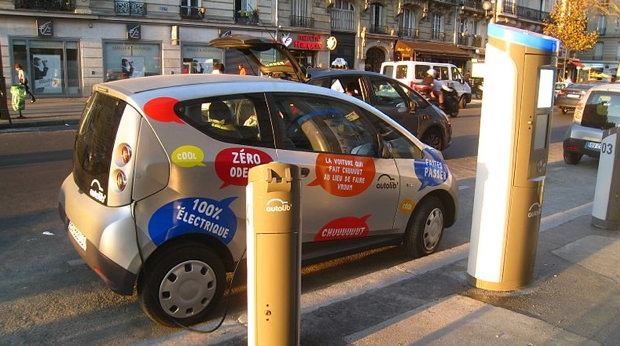
Public transport is moving faster than ever. Paris, confident after its widely successful Velib' bike-sharing program, is moving into motors: electric ones.
The new Autolib' program (a play on liberté, the the French word for liberty) launched on Sunday. It is a public car scheme expected to grow from its current 66 vehicles to 250 by December, and then to more than 3,000 vehicles by 2012 in the French capital and surrounding cities. Billionaire investor Vincent Bolloré teamed up with Bertrand Delanoë, the socialist mayor of Paris, to launch the venture.
Today, if you fly into the City of Light, you can already pedal around the city car (and care) free after paying a small Velib' membership fee. Short bicycle trips are free, and the 20,000 bikes are taken on millions of trips each year. The city's shared bike system even inspired similar program here in the U.S., such as CapitalBikeshare installed in Washington D.C., and New York's soon-to-launch program.
But such city-run car-sharing options have failed to materialize as fast as bike sharing, for obvious reasons. Autolib' estimates it will need at least 80,000 users to turn a profit. At about $12 per hour, and a $189 annual fee, it's still a bargain in Europe where private transport and fuel are much more expensive than in the U.S.
While the U.S. has yet to see a municipally run car sharing program, nonprofit groups like the San Francisco group City Car Share, Chicago's I-Go Carsharing, and Boulder's e-Go Carshare have gotten into the game mostly dominated by the for-profit Zipcar.
Then there's carpooling, which in Europe is now getting hundreds of thousands of people around through sites like Carpooling.com, while sites like RelayRides, WhipCar, Spride, and Getaround allow you to rent out your car when it's not in use. But perhaps, just as Paris's successful bike share inspired New York and D.C., Autolib' may soon have its own set of U.S. descendants.
[Image: Wikipedia]
Reach Michael J. Coren via Twitter or email.


 Janine Benyus: Biomimicry Is Innovation Inspired By Nature
Janine Benyus: Biomimicry Is Innovation Inspired By Nature
by: fast company, 2011-10-04 22:29:08 UTC
Janine Benyus helped bring the word "biomimicry" into 21st century vocabularies. What is biomimicry? Let Benyus explain in this video.
Janine Benyus helped bring the word biomimicry into 21st century vocabularies in her 1997 book on the subject. Her company, The Biomimicry Group, encourages biologists at the design table to ask: how would nature design this? She says our human society will create a more sustainable world in part by emulating the natural organisms all around us, which have already gone through billions of years of trial and error to find elegant and amazing solutions to process and design problems.
[video_twistage 1]
Benyus spoke with EarthSky’s Jorge Salazar:
What is biomimicry?
Biomimicry is innovation inspired by nature. It’s the process of looking at a leaf and trying to figure out how to make a better solar cell.
Biomimicry has been going on for a long time. Think about the Wright brothers looking at turkey vultures to learn about drag and lift in flight.
Now biomimicry is becoming one of the ways that engineers, product designers, and architects do their work. It’s mainly because people are looking for more sustainable ways to do things--to sip energy instead of guzzle it, to save materials, to do things in less toxic ways.
Organisms know how to do these things. After 3.8 billion years, life has learned what works and what’s appropriate on the planet. And that’s what the people trying to redesign our world are looking for--so we can live here in a way that enhances this place.
What are some of the best examples of biomimicry?

I like looking at what organisms do that’s completely different from the way we do the same thing. For instance, take a peacock feather. If we were to make it, we would use chemicals and pigments. But actually, the only pigment is brown. It’s done with structural color and transparent layers. When light reflects back to us through the layers, it creates the color blue or green or gold to your eye.
There’s now an e-reader display screen that uses the same principle. It’s made by Qualcomm. It needs no backlighting, because it uses layers and the ambient light to create the different color pixels to your eye. So it’s an incredible low-energy way to do it.
Here’s another example. Life doesn’t use detergent to clean itself. If you think of things like leaves, that need to stay clean. How do they keep the dust off of them?
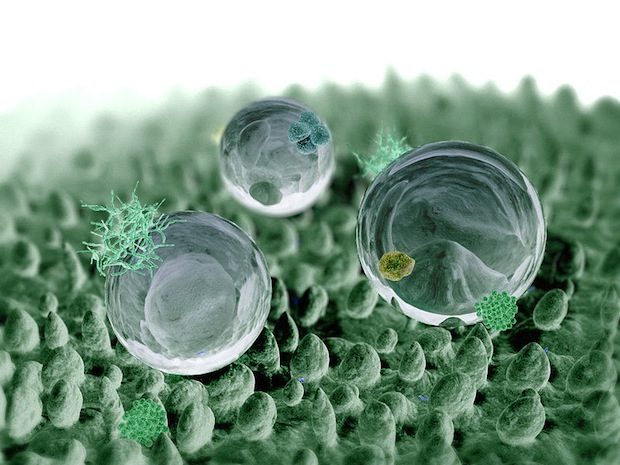
The famous example is the lotus leaf. That’s a leaf that grows in a muddy area, and yet it’s very clean and pristine. The way it keeps itself clean is it has bumps on its surface. When rainwater comes, it balls up. Dirt particles teeter on those bumps. The rainwater balls them away, pearls them away. And that’s been mimicked in building facade paint called Lotusan. The dry paint has that bumpy structure. And rainwater cleans the building, instead of sandblasting or detergents. It’s coming out in all kinds of products--like fabric. It’s called the lotus effect.
How do businesses learn and apply ideas from nature?
In biomimicry, we bring in biologists to the design table. And when a company is trying to develop, for example, a new way to package, we ask, how does nature contains liquids? How does nature repel water? How does nature filter? How does nature resist impacts?
We ask all these kinds of questions, and we do what’s called an amoeba-through-zebra report. We look through the biological literature. We find different ways that organisms do this, and then we present those ideas, those strategies to the inventors, to the R&D team. Very often they look at them say, wow,this is an amazingly simple and beautiful way to solve this problem.
For businesses, biomimicry is about bringing a new discipline--biology--to the design table. It’s not to write an environmental impact statement, as most biologists in business do right now. Instead it’s to go upstream in the design process and say: "How would nature design this?"
What businesses are finding is that the ideas from the natural world actually reduce risk because they use fewer toxins. They don’t use a lot of energy. They’re absolutely parsimonious with materials. Companies not only get a breakthrough product or process, but they wind up saving money. And they wind up being a lot more sustainable, which is what customers are looking for these days.
Biomimicry is a way of looking at 3.8 billion years of good ideas to allow us to leapfrog ahead without having to go through all those years of evolution. We’re able to benefit by emulating the organisms that have already gone through the trial-and-error process and come up with amazing solutions.
Businesses also use biomimicry to re-imagine their whole company. We use this thing called life’s principles, which basically is a list of the things that organisms on Earth have in common. The vast majority of organisms run on sunlight, for example. They do their chemistry in water. They use a small subset of the periodic table. They shop locally. And these principles, when applied at a company level, create a company that not only is environmentally sustainable but that’s resilient--that’s able to adapt and evolve and be locally responsive--and can collaborate in new ways.
It’s an interesting to see design principles in the natural world and say, what if my company functioned like a healthy coral reef or a healthy prairie or a healthy forest? It’s a new way of looking at things, especially now. The watchword right now is resilience in the face of change.

I think that these economic shocks that we’ve been feeling are going to be coming more frequently. They’re going to be lasting longer. And the companies that are truly learning companies, truly adaptive, truly resilient, truly diverse, and decentralized and network-based--like ecosystems--are the ones that are going to survive and thrive.
While in the beginning, you think it’s kind of a stretch to think of a company and a healthy forest as having anything in common, actually the closer those two are in terms of how they function, the healthier that business is going to be.
How can people get involved in biomimicry?
There are a lot of roles for everybody in biomimicry. If you work in a company, and you have an R&D department, hire a biologist to come into your R&D department.
If you are a student, and you’re looking for a whole new career and you’re interested in biology, consider being a biologist at the design table. Go to biomimicry.net. We’ve got lots of courses that we’re running, everything from a one-hour course all the way up to a two-year master level course.
If you’re a designer, an architect, an engineer, a chemist, material scientist--somebody who makes things for a living--consider getting a specialty in biomimicry. Again, go to biomimicry.net and look for our educational opportunities.
More and more universities are teaching biology to non-biology majors. You can find out about that at The Biomimicry Institute, which is our non-profit arm.
Or go on asknature.org. It’s a website that organizes biological strategies by function. Type in something like ‘how would nature lubricate?’ Up will come all kinds of interesting ways. And it won’t be oil-based lubricants.
If you’re doing biological research, upload your research to asknature.org. Become a curator of one of the pages. If you’re a designer, go to that site – and if you’ve got ideas that were inspired by a biological organism--let us know about it. If you’ve got a product inspired by an organism, let us know about that.
Janine Benyus’ 1997 book on biomimicry is called Biomimicry: Innovation Inspired by Nature.
This interview is part of a special EarthSky series Biomimicry: Nature of Innovation produced in partnership with Fast Company and sponsored by Dow.
[Images, from top: Flickr user davide-diploD; Flickr user BotheredByBees; Wikipedia user William Thielicke; Flickr user Kevin Krejci]


 Marks & Spencer Uses PIQET to Evaluate Packaging
Marks & Spencer Uses PIQET to Evaluate Packaging
by: Environmental Leader, 2011-10-04 13:16:31 UTC

Marks & Spencer has selected the Packaging Impact Quick Evaluation Tool to help it understand the environmental impact of its food packaging. The software, designed by the Australia-based Sustainable Packaging Alliance (SPA), uses data sets particular to each region of the world, including North America, South America, Asia, India and Europe. PIQET uses these to [...]
 From ordinary to extraordinary: Recycled shipping container houses
From ordinary to extraordinary: Recycled shipping container houses
by: The Design blog, 2011-10-03 23:54:46 UTC
Shallu Sharma:

Shipping container houseRecycled shipping container house
The ordinary:
Every year thousands of shipping containers go into excess at shipyards and similar storage locations across the whole world. These containers could be used efficiently to make strong shipping container houses. They solve the problem of disposing of these huge shipping containers and provide an efficient building material for making eco friendly houses. These recycled shipping containers could even be used for making swimming pools. These are easy to transport across the globe and their simplified designs make their residential structural construction easy.
Inspiration:
The process of recycling is talking toll all over the world to save environment as well as resources. Similar efforts were made to create constructive house by recycling shipping containers. The flexible and modular shape of these containers served as an inspiration for transforming these structurally strong containers into houses.
The extraordinary:
The strength, availability and low cost have made these shipping containers ideal to be used as building materials. The houses made up of these containers could easily tolerate harsh weather conditions and they could be easily transformed into beautiful luxurious homes. Various stylish and affordable homes have been made using these portable containers.
The target group:
People who love to live green with nature love these homes. These houses are perfect blend of eco friendliness and affordability. It’s a win-win situation for environment lovers. Style and luxury of these homes are in the hands of owner. Well decorated full equipped homes can be carved out from simple portable containers without creating any harm to the Mother Nature. No trees are cut, no material needs transportation, and no carbon footprint is left because it’s a complete eco sensitive way of creating lodging for people keeping both, nature and human needs in mind.
Usage:
Their shape is perfect for creating offices, workspace, worker houses etc. The houses made up of these shipping containers could be relocated elsewhere when the place being occupied by these containers is needed for alternate use. These shipyard houses are so comfortable that they are being used for youth centers, classrooms, office spaces, retail spaces, store houses, etc. all over the world.
Related trends:
1. Ecopod

EcopodEcopod Recycled shipping container houses
Creating homes from shipping houses is not a new concept but very few have practically implemented it. These homes are eco friendly and can be easily transported from one place to another, specially the single level structures. The only area to be worked upon is that these houses have steel body and steel conducts heat very efficiently therefore, some insulation must be provided to make these houses suitable for human beings occupancy. Insulation of bricks, blocks or some wooden structure could serve the purpose very well.
2. Greentainer

GreentainerGreentainer a Recycled shipping container houses
The Greentainer project has been created in Ghandino, Italy and is the perfect example displaying whimsical container architecture. A portable, flexible and self-reliant structure has been created using a 40-foot big container. The Greentainer could be used for multiple uses and transported to infinite locations easily. The solar panels fitted on the roof of the Greentainer provides it with the power needed to run heating and cooling systems as well as lights and other energy driven equipments inside it. This self-efficient house could be used for parties, events, art shows or some grand opening depending upon the situation.
3. Espace Mobile

ESPACE MOBILEESPACE MOBILE a Recycled shipping container house
A unique line of customizable houses has been launched by Espace Mobile ranging from €55,000 to €95,000. These affordable eye-catchy houses are environment friendly and have a modular structure with flexible and long lasting durability. These Espace homes are custom made like automobile purchase allowing users to select the required features ranging from size to configuration, roofing to balcony, and interior to exterior. The house has full provisions for energy conversation. These houses come with 3 years warranty and have proper heat retention. Sizes vary from 7 meters to 15 meters of length and 4 meters wide.
4. Port-a-Bach Shipping Container

Port-a-BachPort-a-Bach a Recycled shipping container houses
A beautiful eco friendly beach houses and holiday homes have been constructed in New Zealand termed as A Bach. They represent New Zealand’s history and culture. These have been created beautifully by Cecile Bonnifait and William Giesen. Though the task of creating a sweet homely place out of a narrow structure was not easy but they did it. They completely opened one side of the container by folding it down which helped in creating a brightened and lighted ambiance inside the house. Each and every corner of the house has been used carefully and resourcefully for example the doors of the container give support to the bed. The whole architecture has high level finishing and provides ample space for at least two adults and two children. It’s a portable structure which is easy to transport and does not poses any environment threats.



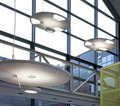



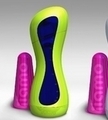
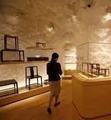



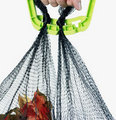
Comments by our Users
Be the first to write a comment for this item.